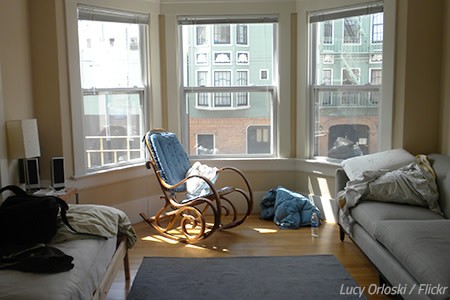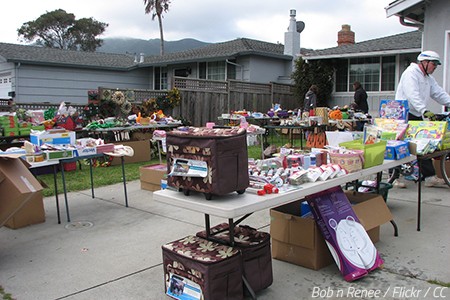 In the majority of house moving scenarios, the place you’re moving to is your final destination – that is, a house or an apartment where you intend to stay and live many, many years. Circumstances may force you to move out again someday but the thing is that at the time of the house move, you don’t know that yet (you can’t see the future, can you?) and you definitely do not plan on moving out anytime soon.
In the majority of house moving scenarios, the place you’re moving to is your final destination – that is, a house or an apartment where you intend to stay and live many, many years. Circumstances may force you to move out again someday but the thing is that at the time of the house move, you don’t know that yet (you can’t see the future, can you?) and you definitely do not plan on moving out anytime soon.
However, under specific conditions, moving to temporary housing may prove to be an excellent interim option – an intermediate step that will fix, as if by magic, your current situation. This time, you know that you’ll only live there only temporarily, either until you can go back to the original home or move to a permanent residence.
Moving into a temporary accommodation is a very specific type of residential moving – it may be a temporary solution to your existing problem but you still need to take the whole moving process seriously in order to guarantee a successful conclusion of the temporary relocation story.
Here are the top 10 tips for moving to temporary housing that will give you the know-how and confidence in pulling off a textbook temporary move.
1. Double-check the reasons behind your decision to move to temporary housing
Your very first step is to make sure you know exactly WHY you’re moving to temporary housing.
- Getting a taste of the new place. Are you moving temporarily to a new city just to get a taste of what living there feels like? Before you commit to a permanent move, you may find it necessary to spend a bit of time in the destination place to know for sure that you’ll feel alright there. A short-term relocation will also give the perfect opportunity to find the right permanent home for yourself in that destination city, often in another state altogether.
- The new home is not ready. A common temporary move scenario is when you’ve already sold your old home or moved out of your rental property but the new place you’ve bought or rented is not yet ready for occupation. So, you’ll need to find temporary accommodation until the time is right to move into your permanent home.
- Repairs or renovation. Another good reason why you may be looking for temporary housing is the fact that your current home is being repaired or renovated and it’s simply impossible to live there while the repair works are underway or the renovation project is not completed.
- Work or education. If you’re relocating temporarily for work or education, you know it’ll only be a short-term move but that doesn’t change the fact that you’re moving out soon and will need to prepare for the occasion in the best possible way.
Whichever the case, you should make sure you’re moving out temporarily for the right reasons.
Guide to Moving to Another State
2. Pick carefully your temporary accommodation
Ok, so you’re moving out temporarily but have you found a place to stay until you’re ready to move to a permanent home?
It’s critical that you weigh all available temporary housing options carefully before you complete the temporary move:
-

Simplicity is key when choosing your temporary home.
Hotels, motels, vacation houses. Depending on the duration of the interim period, hotels, motels, or vacation houses may be a great option for you, especially when you need a place to live for a short period of time. This way you’ll save yourself the hassle of having to rent a house or an apartment – a process that usually requires quite a lot of time and effort. In a way, you’ll feel as if you were on vacation and that is never a bad thing. The only problem? That can easily turn out to be the most expensive temporary housing option out there.
- Extended stay hotels. Extended stay hotels offer long-term accommodation for a reasonable price and that may be the perfect solution in your situation. This way, you’ll have easy access to amenities such as self-service laundry and a kitchen for much more discounted rates than when renting a traditional apartment. So, if you need temporary lodging for a few weeks, this housing option may be perfect for you in terms of price, comfort, and minimum hassle.
- Rental property. If you are forced to find temporary accommodation for at least six months or more, then your best option is to rent an apartment or a house until you can move into the place that will become your permanent residence. When looking to rent a property for your temporary housing needs, opt for a fully-furbished home so that you don’t have to move any furniture from your old one. Also, see if you can sign a monthly lease so that you won’t have any issues when the time comes for you to move out again.
Checklist for Moving to a New City
3. Pack and move only the absolute essentials
One of the most critical decisions when moving out temporarily is what to take with you. Bear in mind that the place you’re going to is only a short-term accommodation so it’s not a good idea to move all of your household items there. In fact, the sensible thing to do is to take the lowest number of few things with you – in other words, you’d be better off moving only the absolute essentials – the very things you’ll need during your temporary stay.
Follow these tips when wondering what essential items to take with you:
- Duration. What you pack when moving temporarily will largely depend on how much time you intend to stay in that temporary home – a few weeks, a few months, or at least a year. Logic dictates that the longer you’ll spend in the temporary housing, the more items you’ll need to take with you.
- Space. Just how big is the place where you’re moving temporarily? If it’s quite spacious, then you may be willing to pack and move more things, including some furniture pieces. However, if the living space appears to be too limited, then you’ll have to make do with a minimum number of essential stuff.
- Climate. When moving to a new city in another state, you should take into account the destination climate there before you rush to pack up your things. After all, it won’t make much sense to pack and move your winter clothes and shoes if you’re moving to a warm state where cold and snowy winters are practically non-existent. And vice versa.
- Availability. When packing for a temporary move, you just have to be aware of what items will be readily available in the temporary home so that you don’t bother moving unnecessary things. This is especially important when you wish to take any furniture items with you. Why should you pay to move your couch when there are already two couches in the new place?
- Sorting. Before you start packing for a temporary move, you just have to sort your possessions very carefully in order to set aside for packing the items that you will really need during your stay at the temporary home. In other words, just don’t pack and move anything that you can easily get by without in the new place.
Packing Checklist: Packing Timeline for Moving
4. Consider using temporary storage

Consider using temporary storage for your stuff.
Since you’ll only be moving the most essential items, the immediate question to answer as a result of that minimalistic-style decision is what you should do with the rest of your things.
The problem is that you’re soon moving out of your current place so you can’t leave your excess stuff there. For obvious reasons, you can’t move those surplus things to the permanent home either – remember, it’s not ready yet (or maybe it’s yet to be found) and that’s the reason you’re in the middle of a temporary move.
Luckily, there are a couple of move-related ideas that can resolve this issue for you: decluttering and temporary storage.
The very first step is, of course, to sort out your items and get rid of the useless stuff – things that you won’t ever need again or maybe never liked in the first place. In reality, one of the best things about moving house – regardless of whether you’re moving out temporarily or permanently, is the change to pare down your possessions and eliminate the excess stuff.
Decluttering your home before moving is important because it will help you save money, time, and space. Sell at a garage sale, give away to friends, or donate all the things that you don’t use and don’t wish to keep any longer.
How to Get Rid of Stuff When Moving
Now, after you’re done decluttering your belongings, you’ll be left with useful stuff which you still won’t move to the temporary home because you won’t need it for the short-term stay or because there won’t be enough storage space there. And that’s exactly when paying for temporary storage will come in extremely handy.
You can rent a self-storage unit and leave your things there during the interim period, or you can pay your moving company for the extra service of temporary storage (they will keep your stuff at a secure storage location for you). Speak with your movers about your storage options – it’s the easiest way to keep your things safe while you’re away – the moving and storage company will come over, pack, and transport to their storage facility all the things you want to keep but cannot move to the temporary accommodation.
5. Take care of all temporary move details
Use the above tips as a brief temporary move checklist to get ready for your upcoming move. Here are a few more tasks that should help you complete a successful temporary move:
- Temporary change of address. You may need to file a temporary change of address with the USPS, meaning that your future mail will be forwarded from the old address to the new one for a period of time you specify. That mail forwarding period is up to 6 months but you can extend it up to 12 months later, if you wish. Here you will find more information about how to change your address when moving out temporarily.
- New address. Share your new address with your family members and close friends – they should know where you’re moving temporarily. Besides, you’ll want to keep in touch with your loved ones too. And the best way to share your updated address is to organize a farewell party and invite your best pals there to see them again before you move away.
- Ask friends for help. Moving to temporary housing can be a rather chaotic and mentally exhausting house moving experience simply because you know you will have to go through it all again in the not so distance future. And that’s exactly why you should consider asking your best pals to help you pack and move – you’ll definitely need their moral support as well.
- Pay up all bills and debts. Remember to pay up all house bills, the rent, or any financial obligations you may have before moving out temporarily. It’s important for your peace of mind to know that you don’t owe anything to anyone before you go away.
- Cancel all subscriptions. Don’t forget to cancel all subscriptions (especially home-delivery services) and discontinue your membership to various organizations, clubs, hobby groups, gyms, etc.
Moving Checklist: Interactive & Printable
Bonus advice: Let top-rated movers handle the temporary move

Get moving quotes from several top-rated movers to start your relocation journey.
One thing is clear: you’ll be likely put under a lot of stress while trying to prepare in the best possible way for the temporary move. This is not surprising considering that moving house is often ranked as one of the most stressful events in a person’s life.
And if you know for a fact that you have a history of not handling well excessive doses of stress, then the most sensible thing you can do is to let reputable movers take care of the temporary move. It won’t really matter if you’re moving only a short distance away or moving to another far-off city in the country, a trustworthy moving company – either local or interstate – will make sure your move to temporary housing will go as smoothly as possible.
Think about this: a great bonus to hiring movers when moving out of state temporarily is that, provided that they do a great job protecting and transporting your valuable possessions, you can use the same moving company again when the time comes to move to a permanent home.
Use our Moving Cost Calculator to start the hunt for the best movers near you.
The post 5 Tips for Moving to Temporary Housing appeared first on The Moving Blog.







